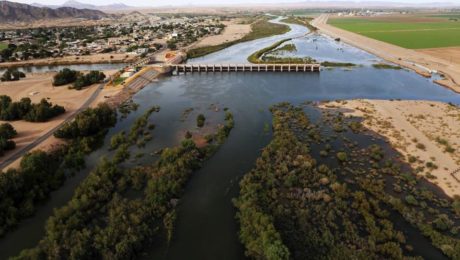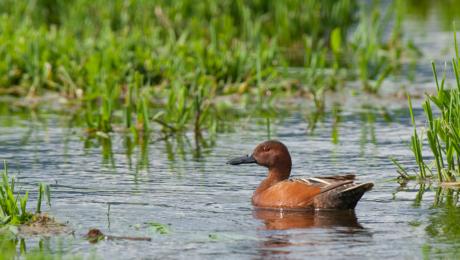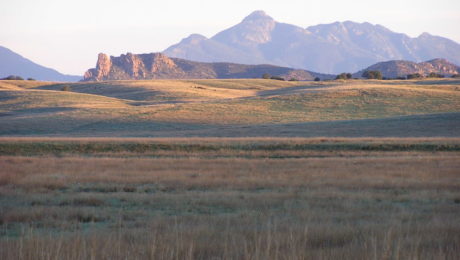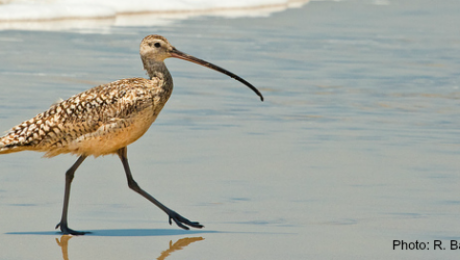Birds Tell the Tale: Ecosystem Response to Habitat Restoration in the Colorado River Delta
Despite having lost roughly 80% of historical wetlands in the Colorado River basin, about 100,000 acres remain. These are the most important wetlands in the Sonoran Desert, providing vital habitat for resident and migratory birds. Pronatura Noroeste created a long-term coordinated bird-monitoring program across the Colorado River basin, and contributes to the conservation and restoration of key sites, the protection of fresh water flows, and the harvest of water by reforestation.
- Published in News
Birds Beyond Borders
A traveling teal brings biologists from Colorado State University, U.S. Fish and Wildlife Service and Nayarit, Mexico together and proves the importance of working across borders to conserve birds and their habitats.
- Published in News
Aridland Bird Conservation in the SJV Region – Then and Now
A 1973 article in American Birding Association’s American Birds about the urgent need for information about aridland bird habitats in the West reminds us that our work to monitor and conserve these habitats is more important than ever.
- Published in News
Partners Share Progress on Bird and Habitat Conservation at SJV Board Meeting
At its winter meeting, the SJV Management Board hosted partners such as Grupo de Ecología y Conservación de Islas, Pronatura Noroeste, and Intermountain Bird Observatory to share progress on bird conservation in the SJV region.
- Published in News
Research and Conservation Needs of Long-billed Curlews Wintering in the SJV Region
Did you know Long-billed Curlews are snowbirds? Researchers from Intermountain Bird Observatory found that birds breeding in the Intermountain West are wintering in the Mexicali and Imperial valleys of the Sonoran Joint Venture. IBO Research Director Dr. Jay Carlisle shares some thoughts on collaboration for conserving this declining species.
- Published in News
Prescott College Publishes 5-Year Study of Wading Birds in Bahía Kino, Sonora, Mexico
A recent study of wading birds in Bahía Kino in Western Sonora, Mexico, may prove critical to future efforts to conserve birds and their habitats in this unique and vital area.
- Published in News
Coordinated Bird Monitoring in Arizona: implementing surveys for Sonoran Desert associated species in the Arid Borderlands and Mexican Highlands regions of Arizona
Project Description Under the guidance of the Arizona Bird Conservation Initiative (ABCI), the Arizona Coordinated Bird Monitoring (AZCBM) Program has been developed to provide a framework for the design and implementation of the long-term monitoring of Arizona’s birds. The goal is to establish a monitoring program which is coordinated among federal, tribal, state, and private
- Published in Awards Program
Marsh Bird Survey Training Workshop
Project Description The U.S. Fish & Wildlife Service (Service) coordinates an annual region-wide multi-agency marsh bird survey effort throughout the Lower Colorado River valley region (Arizona, California, Nevada, Sonora, and Baja California). This survey effort has occurred annually since 1978 and provides the data needed to assess the status of the endangered Yuma Ridgway’s Rail. In
- Published in Awards Program
Developing and Sharing Avian Data to Guide Conservation Efforts in the Sierra de Alamos
Project Description We will implement a breeding bird survey combining transect and point count protocols used by the Arizona Important Bird Areas Project with a nest watch program. We will also share survey and nest watch data with conservation partners in Arizona and northwest Mexico via digital media, printed materials, Skype conferencing, and presentations at appropriate
- Published in Awards Program
Join us in Chiapas: detecting and addressing climate change impacts on birds and their habitats in northern Mexico and the southwestern United States
Rapid ongoing climate change presents new challenges to natural resource managers. Effects are usually at large landscape scales and management actions must account for future uncertainty, often based solely on locally available data. Because birds are known to be indicators of ecosystem health and function and are cost effective to survey at multiple scales, they
- Published in News


 English
English  Español
Español 





